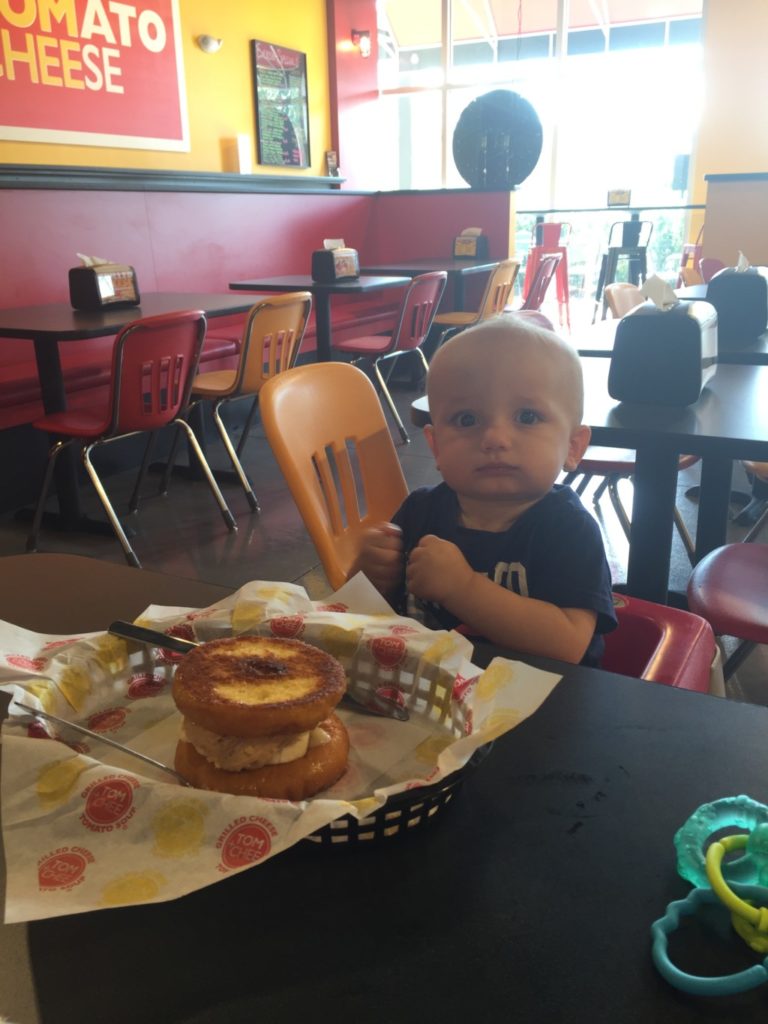 I’ve seen it so many times: baby or toddler, overwhelmed by the situation and unable to communicate his or her thoughts and feelings to the parent or care-taker, commences to screaming and sobbing. Maybe they throw in some pointing or babbling, but more than likely it is just screaming. The parent or care-taker tries desperately to figure out what the child wants but is not having much success.
I’ve seen it so many times: baby or toddler, overwhelmed by the situation and unable to communicate his or her thoughts and feelings to the parent or care-taker, commences to screaming and sobbing. Maybe they throw in some pointing or babbling, but more than likely it is just screaming. The parent or care-taker tries desperately to figure out what the child wants but is not having much success.
Does this situation sound familiar to you? If it does, let me help you communicate with your baby!
Teach Your Baby Sign Language
Yes, sign language! American Sign Language, not just made-up signals. I have taught children in an early childhood setting for almost 10 years now, and I can honestly say that this works.
You will ideally start when your child is still young and has begun to develop fine motor skills (can pick up small objects such as cheerios or puffs), which is usually around 8-10 months. Infants and toddlers learn to communicate non-verbally before they learn to communicate verbally. It is easy for them to feel frustrated when they cannot get across the message they want because they do not have the skills to say it out loud. This could definitely lead to screaming and crying or even temper displays (from both sides of the equation.)
If you have already passed this point, don’t panic; your older baby or toddler will probably still be able to learn these skills, so give it a try anyway!
A few things to keep in mind
Be consistent
Use the signs each time you say the word. This will help your baby learn to associate the sign with the meaning.
Be patient
It will take some time. Sometimes babies will pick up a few signs right away, and sometimes it takes a few months. However long it takes, it will be worth it once you can communicate with your baby and have them be able to communicate back. My almost-three-year-old son still uses signs sometimes as he says the word.
Signs to start with
More: Pinch your fingers together on both hands. Touch all of your fingertips together then pull apart slightly and repeat. This can be useful for several situations besides eating, though meal times is probably when most babies would communicate wanting more. This one is my son’s personal favorite. He used it to communicate that he wanted more food, he wanted me to play a song again, he wanted to watch the castle at Disney World light up again (Me too, Bud. Me too.), etc.

Milk: Squeeze your hand like you are milking a cow.
Eat: Pinch your fingers together and point to your mouth like you are eating.
All done: Finger tips toward the ceiling, open your hand as if to show an empty palm. Use this one to help your baby tell you when he is done eating or done with an activity. My son used it to say he was “all done” getting shots at a well visit one time.
Stop: One hand hits the other palm in a slicing motion, as if you’re cutting something off. This is for you to communicate to them when to “stop” an action or behavior.
More signs to consider
Sleep: Drag your fingers down your face, pinching together at your chin. Think about it like someone saying “And scene.” and doing the same action. It should look like that.
No: Just tap your first two fingers together to your thumb.
Mom: Tap your thumb to your chin.
Dad: Tap your thumb to your forehead.
Here is a FANTASTIC resource to find more information about signs to teach your baby. Check it out to find some signs that are more specific to your communication needs.
I hope this helps you learn to communicate with your baby!











